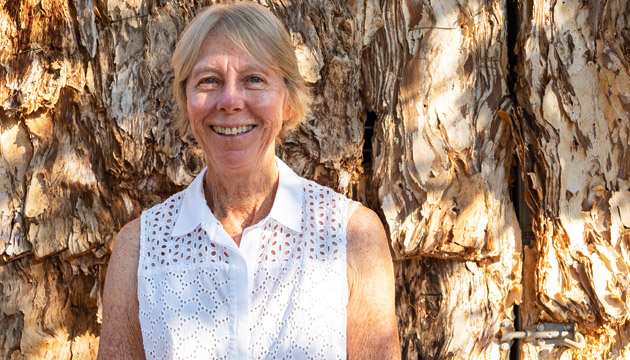Alison Brown’s love for the Dampier Peninsula hasn’t wavered in 50 years.
Story + Photos Therese Hall
Alison Brown was a lanky 19-year-old university student when she first glimpsed her future home on the tip of Western Australia’s Dampier Peninsula 50 years ago. She was visiting Cygnet Bay, the rough camp site home of her fiancé, Bruce Brown, whose father had established a pearling operation there after World War II. “Bruce was quite sure I wouldn’t like the place and that would be the end of that,” she says with a smile.
But Alison surprised him by falling in love with the castaway outpost, a 220-kilometre rough and dusty road journey from Broome. “We arrived after dark and I remember seeing the twinkling of candlelights from the bark huts and the glow of small camp fires down the beach,” she says. It was nothing like the country of her childhood in the state’s Wheatbelt, but it cast a lifetime spell over Alison that holds her here still. “I didn’t mind getting back to basics,” she says. “It was lovely.”
During her tenure, Alison has witnessed the ebbs and flows in the Cygnet Bay business under the influence of three generations of the Brown family. When she arrived in 1969, Bruce’s father Dean was in charge, with Bruce’s brother Lyndon a decade into his pioneering work to culture pearls. Once Lyndon had found the secret of pearl cultivation, she and Bruce shepherded the business through its boom time on the international pearl market in the 1980s and ’90s. After 2008, when the GFC sent pearl sales plummeting, their son James took the helm and transformed Cygnet Bay Pearl Farm into an integrated pearling/tourism business. “Now we’ve got two labour-intensive industries instead of one. Aren’t we lucky?” Alison laughs.
This story excerpt is from Issue #120
Outback Magazine: August/September 2018










